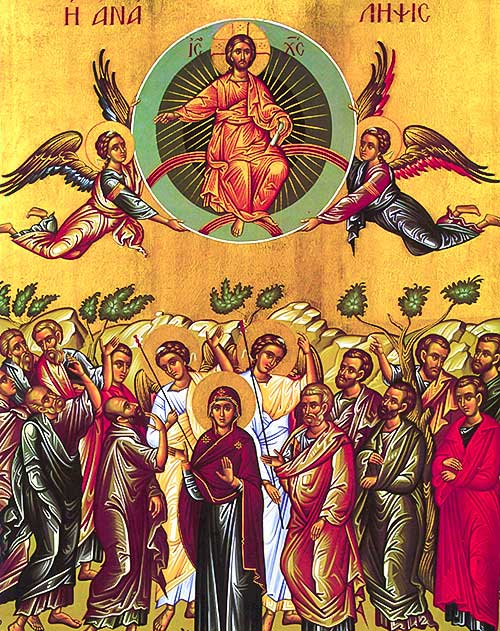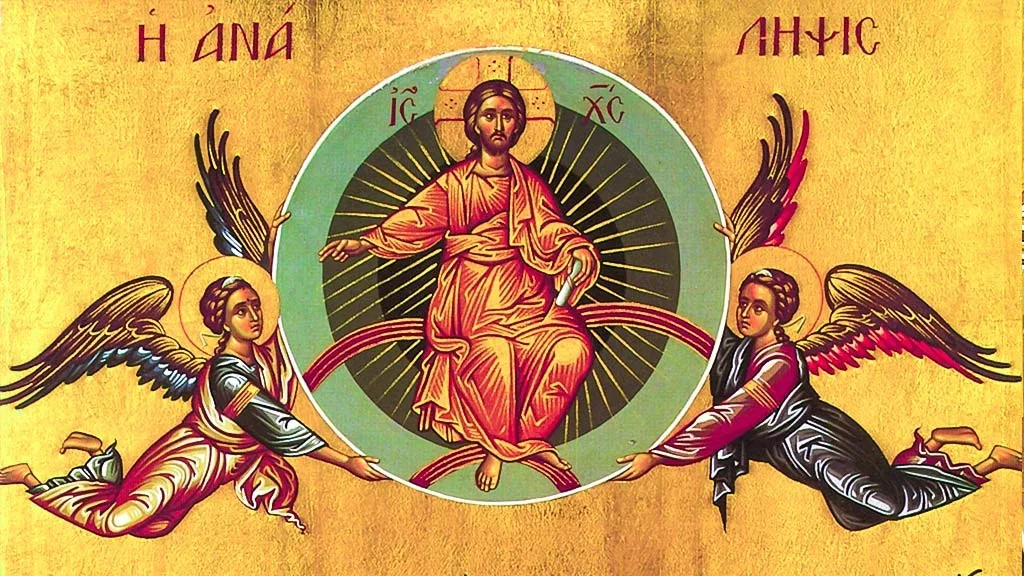The Ascension of our Lord is celebrated by the Orthodox Church forty days after Pascha (Easter), always falling on a Thursday. It is celebrated as one of the Twelve Great Feasts of the Church.
The Ascension marks the moment when Jesus Christ, after His Resurrection, led His disciples to the Mount of Olives, blessed them, and ascended into heaven, instructing them to await the coming of the Holy Spirit.
The biblical account of this event is primarily found in Acts 1:3–11, where Jesus says, “You shall be baptised with the Holy Spirit not many days from now.” He commands the disciples to stay in Jerusalem and commissions them to spread His message to all nations.
As they watch, “He was lifted up before their eyes in a cloud which took Him from their sight” (Acts 1:9). Two angels then assure them, “This same Jesus, which is taken up from you into heaven, shall so come in like manner as you have seen Him going into heaven” (Acts 1:11).

The icon of the Ascension depicts Christ ascending in glory within a mandorla (almond-shaped or round design), blessing with His right hand and holding a scroll in His left — a symbol of teaching. Below, the Virgin Mary stands in a prayerful pose, calm among the disciples, representing the Church. Though not present at the actual event, Saint Paul is often shown to highlight the universal and enduring mission of the Church.
The Feast is observed with a Vespers service the evening before, followed by the Matins and Divine Liturgy on the day itself.
